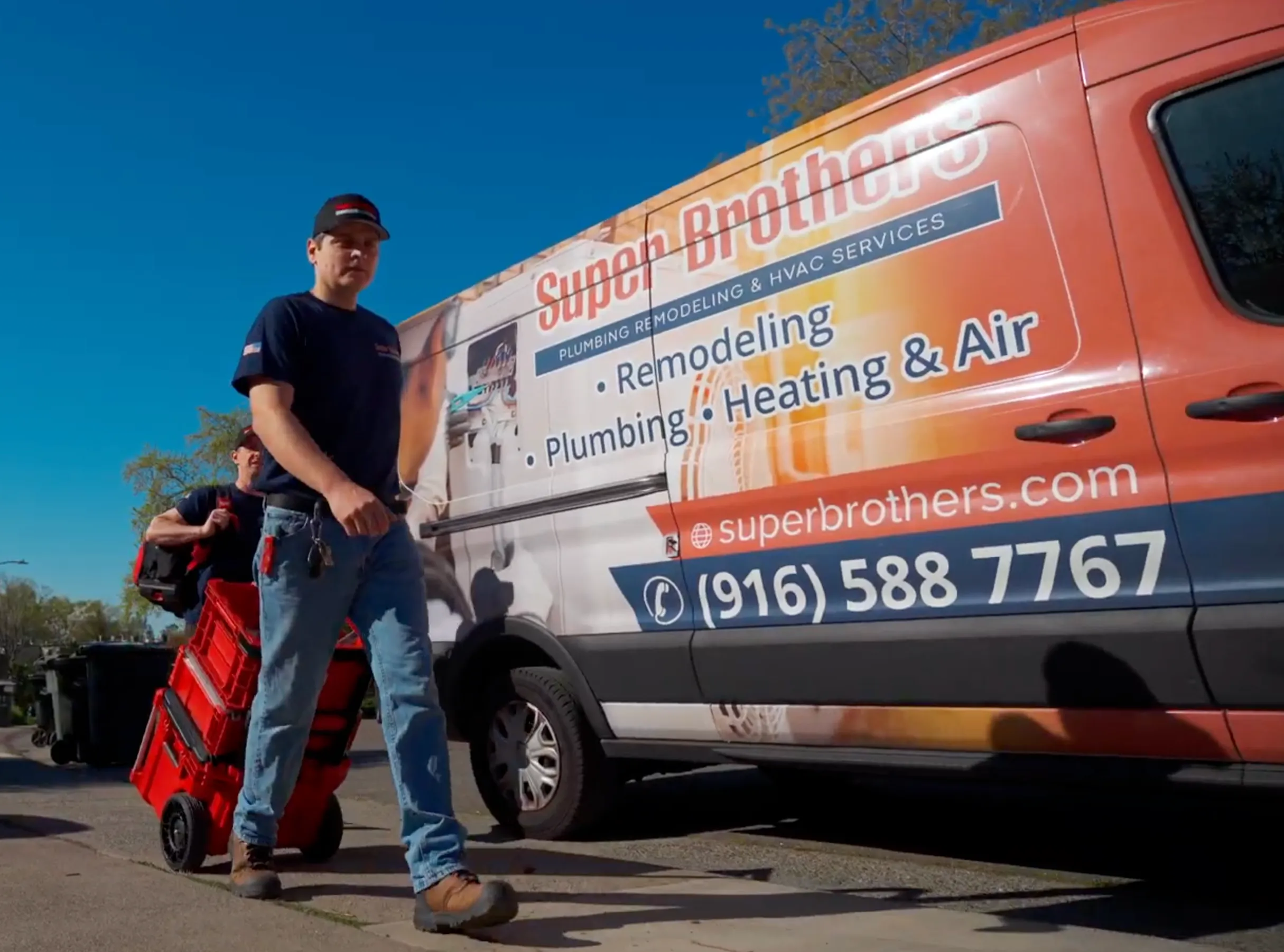Are you planning a plumbing project to replace old pipes? Before you dive in, make sure you’re aware of the importance of obtaining permits for repiping. These permits are essential for plumbers to ensure the safety and compliance of their repair work with building codes and public health standards.
Repipe permits are essential for plumbers to ensure proper piping repair and maintain public health standards. By obtaining a repipe permit, you’re taking the first step towards a successful and legal endeavor while protecting yourself and your property from potential hazards.
The plumbing inspection permit process may involve some paperwork and a nominal fee, but it’s well worth it for peace of mind. So, if you’re ready to begin your DIY plumbing repiping journey, let’s explore how to obtain these essential permits. Don’t delay – start by understanding the ins and outs of repipe permits from a plumbing service today.
Understanding When a Plumbing Permit is Required:
Plumbing permits are essential for significant projects like repiping or drain pipe repairs. The necessity of a permit depends on the project’s scope and local regulations. Ensuring you have the right permit can prevent legal complications and delays.
Importance of Plumbing Permits:
Permits are crucial for major plumbing work, like installing or modifying pipes. They ensure compliance with safety standards and building codes, protecting homeowners from legal issues and ensuring proper installation.
Determining Permit Requirements:
Permit requirements vary by location and project type. While minor repairs may not need a permit, repiping or extensive modifications usually do. Factors to consider include:
- Extent of Work: Small pipe replacements might not need a permit, but extensive repiping or wall modifications likely will.
- Local Regulations: Research local rules to determine if your project needs a permit.
- Professional Advice: Consult licensed plumbers to ensure you meet local requirements.
Consequences of Ignoring Permit Requirements:
Failing to obtain a required permit can lead to legal penalties, safety risks, and potential insurance issues. Unpermitted work can result in fines and jeopardize insurance coverage for any damage, leaving homeowners financially responsible for repairs.

Steps to Obtain a Homeowner’s Plumbing Permit
Homeowners have the opportunity to take charge of their own plumbing projects, including insulation and PC, by obtaining the necessary permits. This process involves a few key steps that ensure compliance with county regulations and pave the way for a smooth execution of your project. Let’s dive into these steps and explore how you can obtain a homeowner’s plumbing permit.
Step 1: Research Your County Regulations
Before embarking on any DIY plumbing project, it is crucial to familiarize yourself with your county’s regulations regarding homeowner permits for insulation. Visit your local government website or give them a call to gather all the information you need about pc and mech. Understanding these rules will help you navigate through the permitting process more effectively in July.
Step 2: Gather Required Documentation
To apply for a plumbing inspection permit, you will typically need to provide specific documentation. This may include property ownership proof, such as your title deed or mortgage statement, as well as detailed plans outlining the scope of diy plumbing work. Make sure to compile all necessary paperwork before contacting a plumbing company.
Step 3: Fill Out Application Form
Once you have gathered all required documentation, it’s time to fill out the application form for your homeowner’s plumbing permit. You can often find this form online on your county’s official website or pick it up at their office if online submission is not an option. Make sure to include relevant information about your pc and insulation.
Step 4: Pay Applicable Fees
Obtaining a plumbing inspection or repipe permit usually comes with fees that vary depending on your location and the complexity of the project. These fees contribute towards covering administrative costs associated with processing your application for DIY plumbing or hiring a plumbing service from a reputable plumbing company, and ensuring compliance with safety standards. Be prepared to pay these fees when submitting your application.
Step 5: Submit Your Application
With all necessary paperwork completed and fees paid, it’s time to submit your application for review to the PC plumbing company. Ensure that you have included all required documents, such as insulation, and double-check everything before sending it in. This will help avoid unnecessary delays in obtaining your permit.
Step 6: Wait for Approval
Once your building permit application is submitted, the county will review it to ensure compliance with permit requirements. The approval process for the building permit may take some time, so be patient. While waiting, you can start gathering the necessary tools and materials, such as insulation, for your plumbing project.
Step 7: Begin Your DIY Plumbing Project
After receiving approval for your homeowner’s plumbing permit, you are ready to start your repipe project on your PC! If you feel confident in your skills, you can tackle the job yourself. However, if you are unsure or uncomfortable with certain aspects of the work, it’s always wise to consider hiring a licensed contractor who specializes in PC plumbing.
By following these steps and obtaining a homeowner’s plumbing permit for your repipe project, you are not only ensuring compliance with county regulations but also taking responsibility for the safety and quality of the pc work being done. So go ahead and make those necessary improvements to your home with confidence!
Note: The steps outlined here are general guidelines for obtaining a building permit and meeting the necessary permit requirements. These guidelines may vary depending on your specific location. Always consult your local government offices or official websites for accurate information on the permit application process.
The Importance of Obtaining a Repiping Permit
Ensuring Safety Standards When you decide to repipe your home, obtaining a permit is essential to ensure the work meets safety standards. A repiping project involves complex plumbing systems that carry water and other substances throughout your property. Without the proper permit, you risk serious issues like leaks, bursts, or contamination.
By securing a repipe permit, you ensure that licensed professionals will inspect the work, verifying that it meets all necessary safety regulations. These inspections cover critical aspects such as pipe material, insulation, and water heaters. With their expertise, inspectors can identify potential problems early on and offer guidance to address them effectively.
Legal Consequences Without a valid repiping permit, you could face legal challenges, especially when selling your home. Potential buyers often request proof that all renovations, including repiping, were done legally and up to code. If you can’t provide the required documentation, it could delay the sale or even lead to legal disputes.
Local authorities can impose fines or penalties if unpermitted plumbing work is discovered during inspections or investigations. These penalties can be substantial and often exceed the cost of obtaining the proper permit in the first place.
Peace of Mind Obtaining a repiping permit provides peace of mind. Knowing that professionals have inspected your new plumbing system ensures that everything is installed correctly and meets safety standards.
Permits also guarantee that you’re hiring licensed plumbers who are knowledgeable about building codes and regulations. Their expertise helps ensure the job is done right, minimizing the risk of future issues and potential damage to your property.
Required Documents for Obtaining a Repipe Permit in San Clemente

Site Plans When applying for a repipe permit in San Clemente, you’ll need to provide detailed site plans. These should outline the existing plumbing lines and fixtures, and show where the new pipes will be installed. Clearly indicate any changes or additions to the current system.
Construction Drawings Accurate construction drawings are essential. Include diagrams showing the layout of the new pipe system, including dimensions, pipe sizes, and connections. Comprehensive drawings help inspectors review your changes and ensure they meet building codes.
Product Specifications You may also need to submit product specifications for the materials you’ll use, such as copper or PEX pipes. This ensures that all materials, including fittings and valves, comply with safety and durability standards.
Proof of Insurance Coverage San Clemente may require proof of insurance from contractors. This protects both homeowners and contractors from liability issues. Ensure your contractor has adequate liability insurance and can provide proof upon request.
Contractor Licensing Information Provide accurate contractor licensing information, including the license number, expiration date, and relevant certifications. This verifies that your contractor is licensed and qualified to perform the work.
Having these documents ready will help expedite the permitting process in San Clemente. By providing detailed site plans, construction drawings, product specifications, proof of insurance, and contractor licensing information, you demonstrate your preparedness and adherence to local regulations.
Consult with local authorities or a professional plumber to confirm specific requirements. Following these guidelines ensures a smooth start to your repiping project.
Step-by-Step Process for Obtaining a Repiping Permit in San Clemente
1. Submit Your Application Form and Supporting Documents
To start the repiping permit process in San Clemente, CA, you must submit an application form to the local authority. This form will ask for details about your project, such as the scope of work, materials used, and estimated timeline. Be sure to include supporting documents like architectural drawings or engineering plans.
Double-check the application for accuracy and completeness to avoid delays. Review specific documentation requirements for your permit to ensure compliance.
2. Pay Applicable Fees
After submitting your application, you will need to pay the fees associated with the repiping permit. These fees cover administrative costs and inspections throughout the project. Fee amounts vary based on property size and the complexity of the work. Confirm fee schedules and payment methods with the local authority to avoid processing delays.
3. Schedule Inspections
Once your application is approved and fees are paid, schedule inspections at different stages of your repiping project to ensure compliance with building codes and safety regulations.
- Rough-In Inspection: Conducted after all new pipes are installed but before they are covered by walls or flooring. The inspector checks workmanship and adherence to plumbing codes.
- Pressure Test Inspection: Verifies that the new pipes can withstand required water pressure. The inspector looks for leaks or weaknesses in the system.
- Final Inspection: Occurs after all repiping work is completed. The inspector reviews the entire project to ensure it meets local regulations and requirements.
Coordinating inspections in a timely manner allows you to address any issues before progressing with your project. Always work with local authorities to schedule inspections as required.

Final Approval for Your Repiping Project
Once all inspections are completed and any necessary corrections are made, you’ll receive final approval for your repiping project in San Clemente. This signifies that your work meets all local building codes and regulations. With final approval, you can proceed with any finishing touches or modifications. Be sure to keep copies of all permits and approvals for future reference or resale purposes.
Agencies and Approvals Involved in Obtaining a Repipe Permit
Local Building Departments:
Local building departments are crucial for issuing repipe permits. They ensure that all plumbing work adheres to safety and building codes. You’ll need to submit detailed plans that include the scope of work, materials, and layout of the new piping system. The department reviews these plans to ensure compliance.
Plumbing Inspectors:
Plumbing inspectors are responsible for verifying that the plumbing work is performed correctly. After obtaining your permit, expect inspections at various stages. Inspectors check for proper pipe sizing, secure connections, support structures, and venting systems, as well as fixtures like faucets and water heaters.
Fire Department Approvals:
For larger properties or those with fire suppression systems, the fire department may require additional approvals. They inspect to ensure that the new piping system does not compromise fire safety measures, including sprinkler head placement, fire hydrant access, and water flow for firefighting.
Patch Crews:
After completing your repipe project and obtaining all necessary approvals, patch crews address any cosmetic issues caused by the repiping work. They repair walls, ceilings, or floors that were opened during the process, restoring your property to its original condition.
Conclusion
Obtaining a repipe permit is essential for compliance with local regulations and safety standards. It ensures your plumbing project is properly managed, preventing legal issues and potential fines.
In San Clemente, you’ll need to provide detailed plans and reports, follow a clear process of application, fees, and inspections, and comply with local codes.
For any repiping project, securing the proper permit is crucial for the safety and efficiency of your home’s plumbing system. Consult professionals if you have questions or need guidance.



